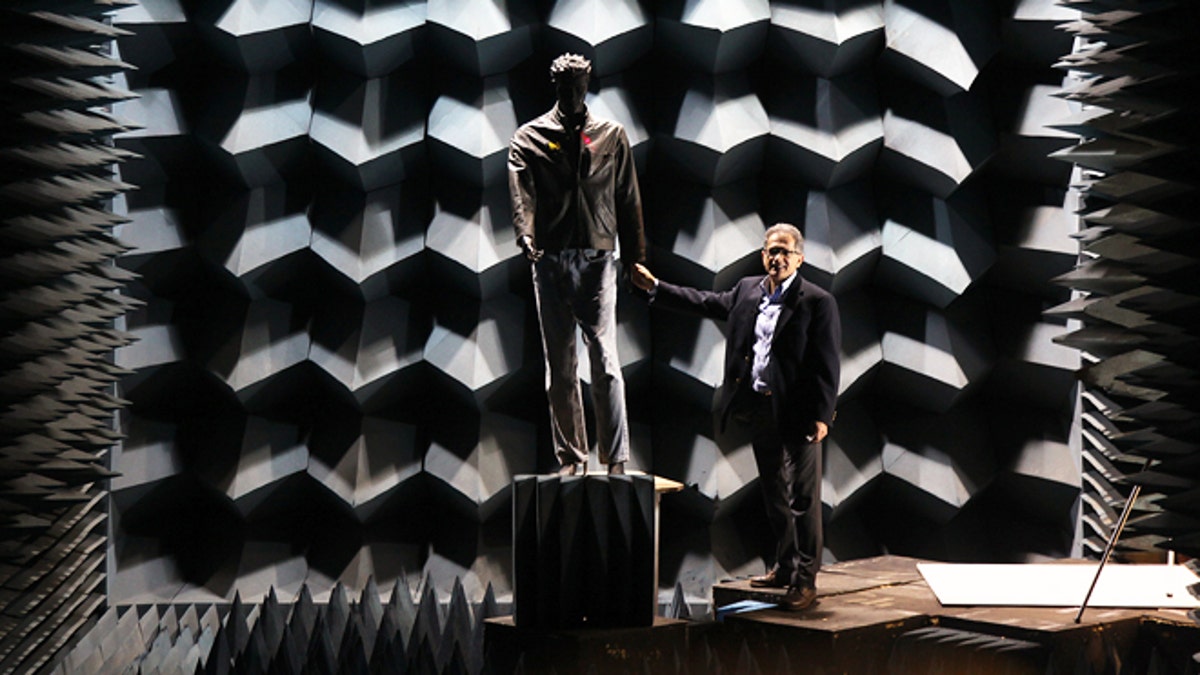
Professor Kamal Sarabandi approaches a mannequin he uses to test the radar in the anechoic chamber.In the aftermath of the Newtown school shooting, a University of Michigan, College of Engineering professor Kamal Sarabandienvisions a new use for a weapons-detecting radar system heâs been developing for thepast few years. The technology could potentially identify a hidden gun or bomb on anapproaching person from the distance of a football field away in less than a second. (Marcin Szczepanski / University of Michigan)
One American professor believes radar could be used to protect students from Newtown-style attacks in the future.
University of Michigan professor Kamal Sarabandi has adapted a radar similar to the type police deploy to identify speeders -- it can now reveal weapons and bombs concealed on a person's body.
In the aftermath of the Newtown tragedy, Sarabandi began investigating how his millimeter-wave radar system for defense could be used to identify weapons on people approaching crowded places like schools.
In a press release put out by the university, the professor said he believes his system could be quicker -- at less than one second per person -- and more practical than a metal detector. It could scan for threats from as far away as the length of a football field.
Radar sends out radio waves and listens for the signals that bounce back sort of like how a bat senses its environment. The millimeter wavelength Sarabandi uses is like that found in ordinary car collision avoidance systems.
- Dark matter, hidden substance that makes up the universe, possibly found by $2b space physics experiment
- The first mobile phone call was placed 40 years ago today
- Is Mars One’s one-way mission to the Red Planet just science fantasy?
- What can you buy with bitcoins?
- This is what human cells look like in space
Sarabandi takes this radar and links it with Doppler radar signal processing. The Doppler is used to identify the signature of an individual person – rather than an incoming rain front.
Polarimetric radar is used to search for weapons. A metal object can change the radar beam polarization and his system interprets this change to flag weapons.
A signal is sent at a specific polarization and analyzes the polarization of the signal that bounces back.
Radar polarimetry is then used to evaluate the signal bouncing back off the person for a “glare” that would reveal a metal object has been hidden. If the signal returns with a different polarization then it suggests a person is possibly carrying a weapon.
Sarabandi envisages the tech scanning crowds at a distance, flagging suspect individuals and referring them for further scrutiny by security.
"Schools, airports, stadiums or shopping malls—wherever there is a large number of people that you want to protect," Sarabandi said.
The Army is funding the University of Michigan team and work is underway to miniaturize the system to deploy on a robot.
Research has been conducted with computer simulations and an echo-reducing chamber with a mannequin wearing a leather jacket hiding a “weapon” of a block of was studded with nails.
The technology has yet to be tested on real guns or people.
Ballet dancer turned defense specialist Allison Barrie has traveled around the world covering the military, terrorism, weapons advancements and life on the front line. You can reach her at wargames@foxnews.com or follow her on Twitter @Allison_Barrie.
